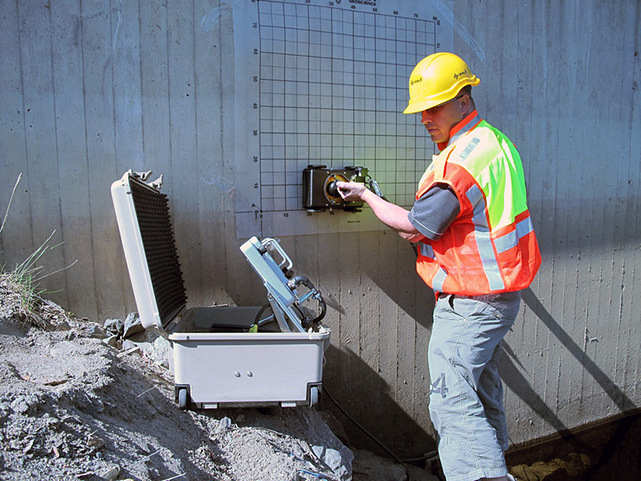Reveal the Transformative Power of Concrete Scanning in Making Best Use Of Effectiveness and Safety And Security
Concrete scanning has actually emerged as a crucial device in the construction industry, using unequaled advantages in enhancing job efficiency and ensuring safety and security requirements. By making use of advanced innovation, concrete scanning permits professionals to see past the surface area, discovering hidden intricacies that can affect the architectural integrity of a building. The transformative power of concrete scanning hinges on its ability to offer real-time data and comprehensive understandings, changing how projects are intended and performed. As we delve right into the ins and outs of this cutting-edge strategy, a globe of opportunities opens up, showcasing a brand-new period of building and construction practices that prioritize accuracy and safety.
Significance of Concrete Scanning
Guaranteeing the structural honesty and security of building tasks starts with the critical step of conducting comprehensive concrete scanning. Concrete scanning is a non-destructive technique used to detect and map subsurface elements within concrete structures.
Additionally, concrete scanning aids in enhancing job timelines and budget plan by avoiding unexpected costs and hold-ups that may arise due to unexpected blockages within the concrete. Inevitably, spending in extensive concrete scanning is an aggressive method that boosts both effectiveness and safety and security in construction projects.
How Concrete Scanning Functions
Concrete scanning runs as a vital device in building and construction tasks by using advanced innovations to find and map subsurface elements without causing structural damage. Ground Permeating Radar (GPR) and Electromagnetic Induction (EMI) are 2 key techniques made use of in concrete scanning. GPR jobs by giving off high-frequency radar pulses right into the surface area, which get better when they run into subsurface objects or voids. The moment considered the signal to return indicates the depth and area of the items. EMI, on the various other hand, makes use of magnetic fields to identify differences in product structures, such as recognizing rebar or avenues within concrete structures.
During the scanning process, the information accumulated is evaluated in real-time, enabling immediate recognition of potential dangers or obstacles under the surface area. This details aids in decision-making, ensuring that construction tasks continue safely and successfully. Furthermore, 3D imaging software application can be used to create topographic maps of the subsurface components, additionally boosting job planning and execution. By using these advanced modern technologies, concrete scanning dramatically lowers the risk of pricey damages and injuries on building sites.
Advantages of Concrete Scanning
One of the main benefits of concrete scanning is the ability to spot and locate ingrained things such as rebar, post-tension cables, and channels properly. Concrete scanning assists in planning and developing much more efficiently, as it gives exact info regarding the area and depth of architectural components.

Case Research Studies: Concrete Scanning Success

In another situation, a building business used 3D concrete scanning to assess the condition old concrete structures in a historical structure. The comprehensive scans offered valuable insights right into the extent of degeneration and helped prioritize upkeep initiatives successfully. By proactively addressing areas of worry recognized through scanning, the company had the ability to extend the life-span of click this the framework and make sure passenger safety.
These situation research studies underscore the transformative power of concrete scanning in boosting performance, precision, and security in building projects.
Executing Concrete Scanning in Projects
Implementing innovative scanning modern technologies during construction projects has become significantly important for boosting precision and safety. By incorporating concrete scanning right into job preparation and execution, building groups can recognize potential hazards, such as rebar or post-tension cords, concealed within concrete structures. This positive strategy lessens the threat of accidents, hold-ups, and costly rework, inevitably resulting in much more reliable job timelines and budgets.
To execute concrete scanning efficiently, job managers must work together closely with skilled scanning experts to determine one of the most appropriate scanning methods for the certain task requirements. Involving scanning professionals from the onset of a task allows the team to develop detailed scanning plans that attend to key areas of concern and ensure thorough information collection.
In addition, incorporating concrete scanning into regular task operations can improve decision-making procedures, as real-time scan information provides instant understandings into the condition of concrete structures - Concrete Scanning. This data-driven method helps with notified analytical and enables teams to make changes promptly, promoting a culture of effectiveness and safety throughout the project lifecycle

Conclusion
In conclusion, concrete scanning plays a critical role in boosting effectiveness and safety in building and construction tasks. By using sophisticated click here to find out more modern technology to detect and map out underlying frameworks within concrete, this procedure aids to avoid expensive errors, guarantee architectural honesty, and reduce risks on website. With the capacity to uncover surprise components and supply precise information, concrete scanning proves to be a useful tool for enhancing job results and making best use of total success.
Concrete scanning is a non-destructive technique used to find and map subsurface elements within concrete frameworks. In addition, concrete scanning assists in optimizing task timelines and budget by avoiding unforeseen costs and delays that might develop due to unanticipated obstructions within the concrete. One noteworthy instance research involves a large improvement project where concrete scanning played a critical role in guaranteeing job success.In an additional case, a building company utilized 3D concrete scanning to evaluate the problem of aging additional reading concrete structures in a historic building. By integrating concrete scanning right into task planning and implementation, building teams can determine potential hazards, such as rebar or post-tension cable televisions, hidden within concrete structures.